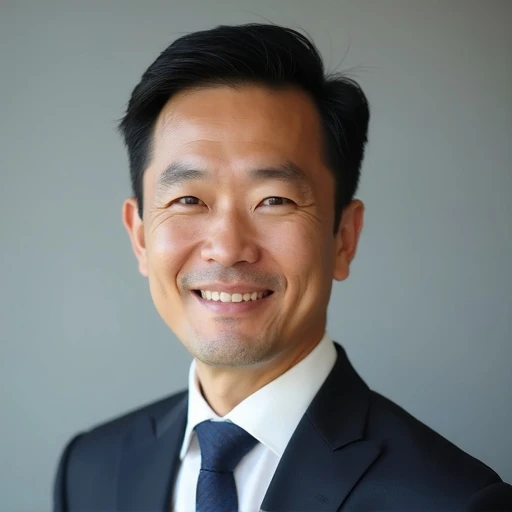South Korea is currently navigating a complex landscape of domestic and international challenges. Surging apartment prices in Seoul are reigniting concerns over housing affordability, while the nation confronts increasingly sophisticated cyber threats that have prompted calls for a more proactive defense strategy. Amid these pressures, a long-term vision for a unified labor market with Japan and Taiwan is being discussed as a potential path toward regional economic stability.
Key Takeaways
- Seoul's real estate market is experiencing a significant price surge, creating economic anxiety among residents.
- Cybersecurity experts in South Korea are advocating for an "active defense" strategy to counter rising digital threats.
- A proposal for an integrated labor market connecting South Korea, Japan, and Taiwan is emerging as a topic of discussion for future economic cooperation.
- These distinct challenges highlight the multifaceted pressures on South Korea's economy, security, and long-term regional strategy.
Seoul Real Estate Prices Fuel Public Concern
The property market in Seoul, one of Asia's most expensive cities, is once again a major source of public worry. After a period of relative stability, apartment prices have begun to climb sharply, placing immense pressure on household finances and making homeownership an increasingly distant dream for many, especially younger generations.
This resurgence in prices is driven by a familiar mix of factors, including limited housing supply in preferred areas, persistent buyer demand, and broader economic conditions. The sight of towering apartment complexes, like those visible from Namsan Mountain, serves as a constant reminder of the high stakes in the city's real estate sector.
A History of Volatility
Seoul's housing market has a long history of boom-and-bust cycles. Successive governments have implemented numerous regulations, from stricter loan requirements to higher property taxes, in attempts to cool the market. However, these measures have often had limited long-term success, with prices frequently rebounding after brief periods of calm.
The Economic Impact of the Housing Surge
The current price increases are not just an issue of affordability; they have wider economic implications. Rising real estate values contribute to a widening wealth gap between property owners and renters. Furthermore, high levels of household debt, much of it tied to mortgages, pose a potential risk to the nation's financial stability should economic conditions change unexpectedly.
Analysts are closely watching key indicators from organizations like the Korea Real Estate Board to gauge the speed and scale of the price increases. According to market data, some popular districts in Seoul have seen double-digit percentage growth in apartment values over the past year, far outpacing wage growth.
Household Debt a Major Concern
South Korea has one of the highest household debt-to-GDP ratios among major economies. A significant portion of this debt is linked to real estate, making the market's stability a critical component of the national economy.
The government faces a delicate balancing act. Overly aggressive measures to curb prices could harm the construction industry and the broader economy, while inaction could lead to a speculative bubble and increased social discontent. This ongoing challenge remains a central focus of domestic policy debates.
Growing Cyber Threats Prompt Calls for New Strategy
While economic pressures mount at home, South Korea is also facing a growing threat in the digital realm. The country's advanced technological infrastructure and hyper-connected society make it a prime target for a wide range of cyberattacks, from state-sponsored espionage to financially motivated ransomware campaigns.
In response to the escalating frequency and sophistication of these attacks, cybersecurity experts and some government officials are now calling for a strategic shift. The traditional defensive posture, focused on firewalls and detection, is seen by some as insufficient. Instead, they are advocating for a more assertive approach known as "active defense."
"A purely defensive strategy is no longer enough. We must have the capability to proactively disrupt threats before they reach our networks. Active defense is about moving from a reactive to a proactive security model," an unnamed cybersecurity expert was quoted as saying in a recent industry forum.
What is Active Defense?
Active defense in cybersecurity refers to a spectrum of proactive measures taken to thwart attackers. While it does not always mean "hacking back," it involves more aggressive tactics than traditional security. These can include:
- Threat Hunting: Proactively searching for hidden adversaries within a network, rather than waiting for an alert.
- Deception Technology: Creating decoy systems and data to lure and trap attackers, allowing defenders to study their methods.
- Information Sharing: Rapidly distributing intelligence about new threats across government and private sectors to enable a collective defense.
- Disruption Operations: In some government contexts, this could involve actions to take down attacker infrastructure, such as command-and-control servers.
The push for this strategy highlights the severity of the threats South Korea faces, particularly from state-sponsored actors. The nation's critical infrastructure, including its financial systems, energy grids, and major technology companies, are all considered high-value targets.
A Vision for a Unified East Asian Labor Market
Looking beyond immediate challenges, a forward-thinking economic concept is gaining attention: the creation of a unified labor market between South Korea, Japan, and Taiwan. This ambitious idea aims to address shared demographic and economic challenges faced by all three highly developed economies.
Proponents of the concept suggest that allowing for the freer movement of skilled labor between these nations could provide significant benefits. All three are grappling with aging populations, declining birth rates, and resulting labor shortages in key industries. An integrated market could help fill critical skills gaps and boost economic dynamism.
Shared Demographic Hurdles
South Korea, Japan, and Taiwan have some of the lowest fertility rates in the world. This demographic trend is projected to lead to shrinking workforces and increased strain on social welfare systems in the coming decades. A shared labor pool is seen as one potential mechanism to mitigate these long-term economic headwinds.
Potential Benefits and Obstacles
An integrated labor market could allow a Korean tech company to more easily hire a specialist engineer from Taiwan, or a Japanese healthcare provider to recruit skilled workers from South Korea. This could enhance innovation and competitiveness for all three economies.
However, the path to such a reality is filled with significant obstacles. Key challenges include:
- Political and Historical Tensions: Deep-seated historical issues, particularly between South Korea and Japan, would need to be overcome to achieve the level of trust required for such an agreement.
- Regulatory Harmonization: Aligning professional certifications, visa policies, tax laws, and social security systems would be a massive and complex undertaking.
- Public Sentiment: Gaining public support in all three nations for increased labor mobility would be essential and could face resistance from domestic labor groups.
Despite these hurdles, the fact that this idea is being discussed signals a recognition of shared regional challenges. As South Korea contends with immediate crises in housing and cybersecurity, this long-term vision offers a glimpse into how the nation might position itself for future prosperity in a rapidly changing East Asia.





